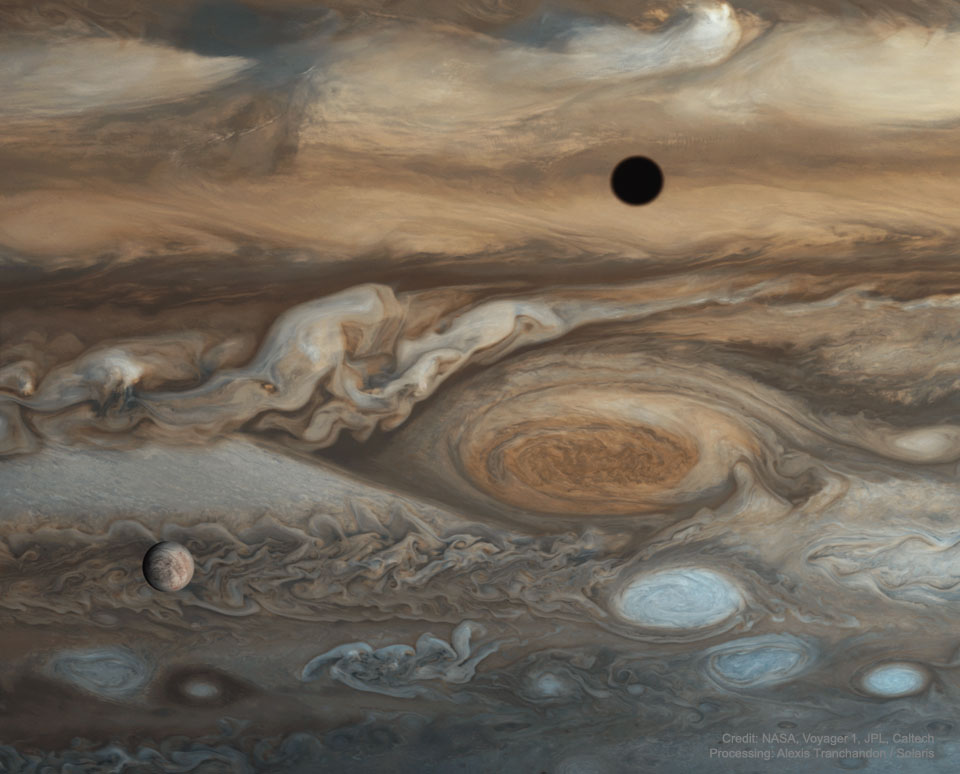2020 June 28
Europa and Jupiter from Voyager 1
Image Credit: NASA, Voyager 1, JPL, Caltech; Processing & License: Alexis Tranchandon / Solaris
Explanation: What are those spots on Jupiter? Largest and furthest, just right of center, is the Great Red Spot — a huge storm system that has been raging on Jupiter possibly since Giovanni Cassini’s likely notation of it 355 years ago. It is not yet known why this Great Spot is red. The spot toward the lower left is one of Jupiter’s largest moons: Europa. Images from Voyager in 1979 bolster the modern hypothesis that Europa has an underground ocean and is therefore a good place to look for extraterrestrial life. But what about the dark spot on the upper right? That is a shadow of another of Jupiter’s large moons: Io. Voyager 1 discovered Io to be so volcanic that no impact craters could be found. Sixteen frames from Voyager 1’s flyby of Jupiter in 1979 were recently reprocessed and merged to create the featured image. About 43 years ago, Voyager 1 launched from Earth and started one of the greatest explorations of the Solar System ever.
Free Download: Voyager Posters
Tomorrow’s picture: double sky trees
航行者1号拍摄的木卫二和木星
影像提供:NASA, Voyager 1, JPL, Caltech; 图像处理和授权:Alexis Tranchandon / Solaris
说明:木星上的那些斑点是什么?其中,最大和最远的是中右方的大红斑,一个可能自355年前卡西尼发现它之后,就在木星肆虐至今的庞大风暴系统。至于大红斑的颜色为何泛红,至今成因仍然不明。影像左下角的斑点,则是木星最大卫星之一的木卫二。1979年航行者号回传的影像,支持木卫二有次表面海洋的现代假说,因此它是寻找地外生命的好地方。不过,右上角的暗斑是什么呢?那是另一颗木星大卫星木卫一的影子。航行者1号发现木卫一的火山活动极为活跃,以至于表面看不到撞击坑。1979年旅行者1号飞越木星时所拍下的16张照片,最近重新处理并接合出上面这幅主题影像。约在43年前,旅行者1号从地球发射,开启了至今greatest explorations太阳系最伟大的探索任务之一。
免费下载:旅行者海报
明日的图片:double sky trees







